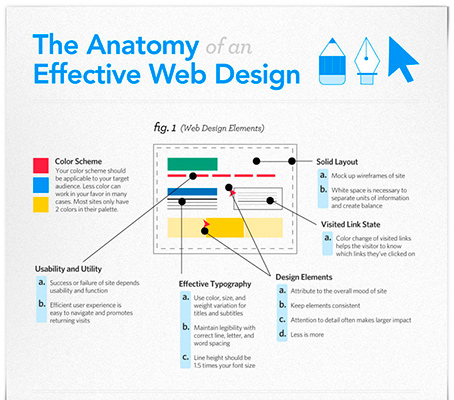Intrigued In Finding Out Exactly How Internet Site Style Has Progressed For Many Years? Discover The Trip From Simple Layouts To User-Centered Techniques
Intrigued In Finding Out Exactly How Internet Site Style Has Progressed For Many Years? Discover The Trip From Simple Layouts To User-Centered Techniques
Blog Article
Post Composed By-Hartley Bojesen
In the past, internet sites were simple and concentrated on information. Navigating was direct, and style was for desktops. Currently, https://www.searchenginejournal.com/author/adriana-stein/ is vital. Data guides styles for easy navigation. Responsive formats suit different devices. Today, dark setting reduces pressure, and minimal menus enhance navigating. Interactive attributes involve users, and vibrant visuals stand out. AI integration increases interaction. See how style has actually advanced to enhance your on-line trip.
Early Days of Website Design
In the very early days of website design, simpleness preponderated. Internet sites were standard, with restricted colors, typefaces, and layouts. The focus was on offering details rather than showy visuals. Users accessed the net via slow dial-up links, so rate and capability were key.
Navigation menus were straightforward, generally situated at the top or side of the web page. Web sites were designed for desktop, as mobile browsing wasn't yet prevalent. Content was king, and designers focused on easy readability over complex design aspects.
HTML was the main coding language utilized, and designers needed to function within its restraints. Computer animations and interactive attributes were marginal compared to today's standards. Sites were fixed, with little vibrant web content or individualized individual experiences.
Rise of User-Focused Design
With the evolution of web site layout, a change towards user-focused style principles has ended up being significantly popular. Today, developing web sites that focus on user experience is essential for involving site visitors and accomplishing business goals. User-focused design entails comprehending the requirements, choices, and actions of your target audience to customize the website's layout, web content, and includes appropriately.
Designers currently perform complete research, such as user surveys and usability screening, to gather insights and feedback straight from individuals. This data-driven approach assists in creating user-friendly navigation, clear calls-to-action, and aesthetically appealing user interfaces that reverberate with visitors. By placing the user at the facility of the design process, sites can deliver a more personalized and delightful experience.
Responsive style has also become an essential aspect of user-focused style, making sure that web sites are optimized for numerous tools and display dimensions. This flexibility boosts access and usability, dealing with the varied means individuals communicate with sites today. Essentially, the increase of user-focused style represents a shift towards producing electronic experiences that focus on the demands and expectations of completion customer.
Modern Trends in Web Design
Discover the current trends shaping web design today. One prominent trend is dark setting layout, supplying a sleek and contemporary look while minimizing eye stress in low-light atmospheres. One more crucial pattern is minimalist navigation, simplifying food selections and boosting individual experience by concentrating on essential elements. Integrating micro-interactions, such as computer animated buttons or scrolling effects, can produce a more interesting and interactive website. Responsive style continues to be crucial, making certain smooth customer experiences throughout various devices. In addition, using bold typography and asymmetrical layouts can include visual interest and draw attention to certain content.
Incorporating AI technology, like chatbots for client support or tailored referrals, improves user interaction and enhances processes. Accessibility has likewise end up being a significant trend, with developers prioritizing comprehensive layout methods to deal with varied user demands. Accepting sustainability by maximizing web site performance for speed and efficiency is an additional emerging fad in web design. Collaborating with user feedback and data analytics to iterate and enhance style constantly is vital for remaining pertinent in the ever-evolving digital landscape. By embracing these contemporary fads, you can create a visually enticing, straightforward site that resonates with your target market.
Conclusion
As you assess the advancement of internet site style from the early days to currently, you can see exactly how user-focused layout has come to be the driving pressure behind contemporary trends.
Welcome the trip of adjustment and adaptation in website design, always keeping the user experience at the leading edge.
Tippingpointdigital
Remain current with the current trends and technologies, and never stop evolving your method to produce aesthetically stunning and easy to use sites.
Develop, adapt, and develop - the future of website design is in your hands.
